 Society
Society

Bảo Hoa
LÂM ĐỒNG — From being one of the most under-developed areas in Lâm Đồng Province, life in the Đam Rông communes is getting better as residents find new ways to improve their livelihoods.
Deep in the Central Highlands in the northwestern area of the province, Đam Rông, consisting of the four communes of the same name, is a mountainous area mostly untouched by technology and industrialisation.
With over 65 per cent of its residents belonging to ethnic communities, reducing poverty has been an important mission for the locality over the last decade.
Lý Công Thành, 25, a resident in Đam Rông 2 commune, has been able to improve his family’s durian and coffee farms thanks to a youth support fund that came from Lâm Đồng Province’s People’s Committee, known as Project 1902.
“Each year I can borrow a maximum of VNĐ200 million (US$7,600), over a period of five years, to grow and take care of coffee and durians,” he said.
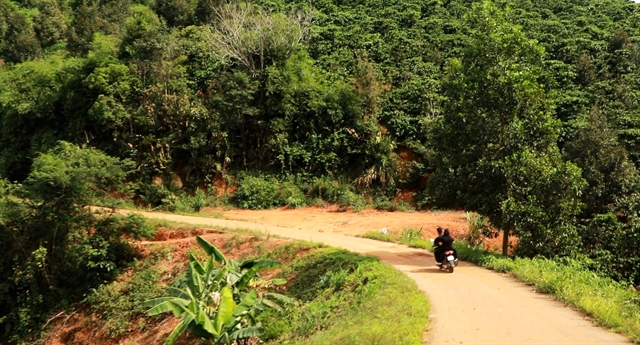 |
| A road that leads to coffee and durian growing areas in Đam Rông area in the Central Highland province of Lâm Đồng. Over 75 per cent of the area is covered by forests and forest land. — VNS Photos Bảo Hoa |
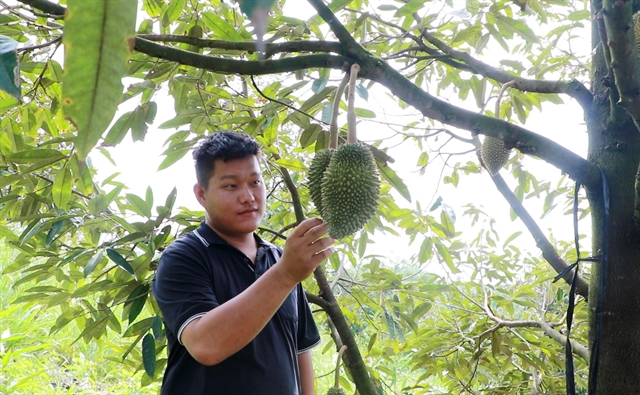 |
| Lý Công Thành, a resident in Đam Rông 2 Commune, has been growing durians with financial support from Lâm Đồng Province's People's Committee. |
Thành used the money to install drip irrigation systems for the durians and graft the coffee trees to optimise yield.
“Last year the coffee prices were very high. I was able to sell coffee beans for VNĐ90,000-100,000 ($3.5-3.8) per kilogramme and earn over one billion đồng ($38,300),” he said.
“For durians, I sold them at about VNĐ70,000 per kilogramme and earned VNĐ500-600 million.”
Since the fund is catered to young people, it is easily accessible with simple loan procedures, according to Nguyễn Nhật Linh, secretary of the local youth union.
“The interest rate is 0.6 per cent per year, which is not very high, and young people don’t need collateral to apply for the loans,” he said.
“The social policy banks allow unsecured loans, which they can apply for by just getting a confirmation from their commune’s People’s Committee.”
The money is disbursed on the 24th day of each month, and after two or three years, if their businesses grow well, borrowers can pay off their debts before the due date, Linh added.
“Lots of families have, step by step, built new houses or renovated their existing homes, and settled down in our commune,” he said.
In Đam Rông 3 commune, raising silkworms for silk has gradually lifted people out of poverty since 2016.
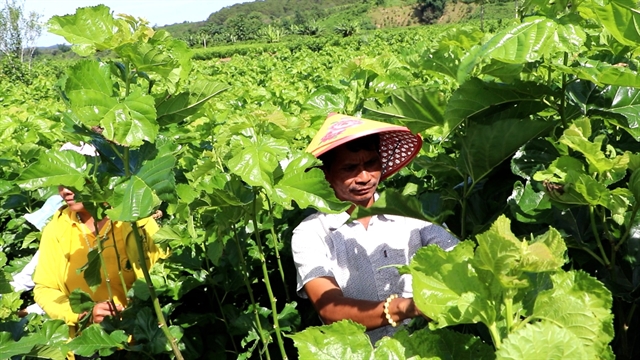 |
| Farmers in Đạm Rông 3 commune pick mulberry leaves to feed silkworms. |
It started as a pilot project by the local agricultural centre to replace maize farming, which was unprofitable, according to Ma Rương, a local agricultural officer.
“With maize, usually from one rod (0.04 ha) we only earn about one to two million Vietnamese đồng ($38-77), not including the costs of seeds, labour and pesticides,” she said.
“But growing mulberry and raising silkworms, we can earn three times higher than that.”
Mulberry trees are grown in abundance so their leaves can be used to feed the worms. Once grown, the silkworms will spin cocoons, which are raw silk that can be sold.
As of this year, 227 out of 300 households in the commune have gotten involved in the silkworm business. Rơ Lik Ha Doel’s family is one of them.
“This job helps provide for my family,” he said.
"In one month, we normally raise one box of young larvae and earn about VNĐ10-12 million ($383-766), minus all expenses."
A cooperative has been formed so the farmers can support each other in the business, with nine members and 22 associated members.
“We mainly help each other with farming techniques, leaf varieties and labour,” said agricultural officer Ma Rương.
“On average, one hectare brings in an income, minus expenses, of two hundred million. So per member, it will be six to eight million Vietnamese đồng per month.”
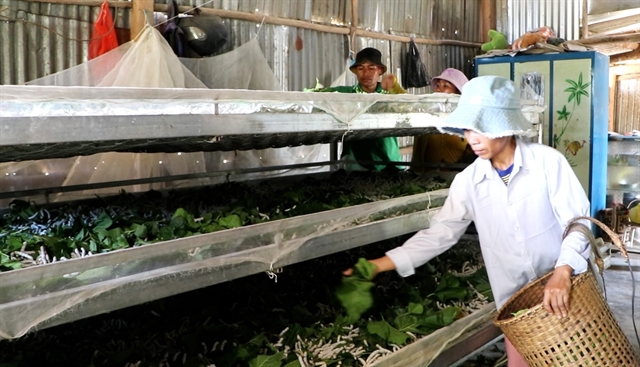 |
| Rơ Lik Ha Doel's family sets up silkworm rearing facilities in their house. |
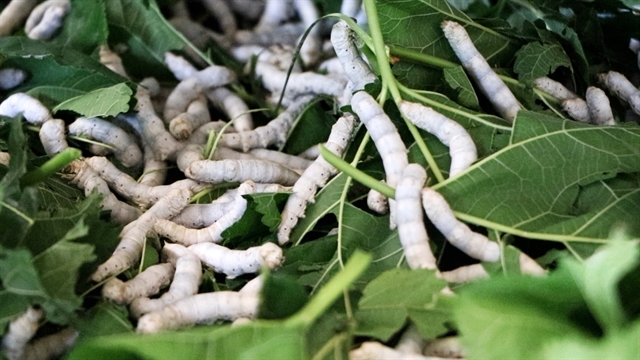 |
| Once grown, the silkworms will spin cocoons, which are raw silk that can be sold. |
As the model provides a stable income for farmers, it is highly encouraged by local authorities.
Kon Yông Ha Khắt, vice chair of the commune's People’s Committee, said: “Currently, in our commune, the mulberry growing area has reached over 100 hectares.
“This year, we will continue to expand the silkworm-raising model. We can see that it’s an effective model and gives people a much better life than in previous years.”
The world may be changing at neck-breaking speed with new machines and technologies, but for the people of the rural Đam Rông, farming is still the way of life.
With it, they are doing their best to give themselves and their families a better life. — VNS




